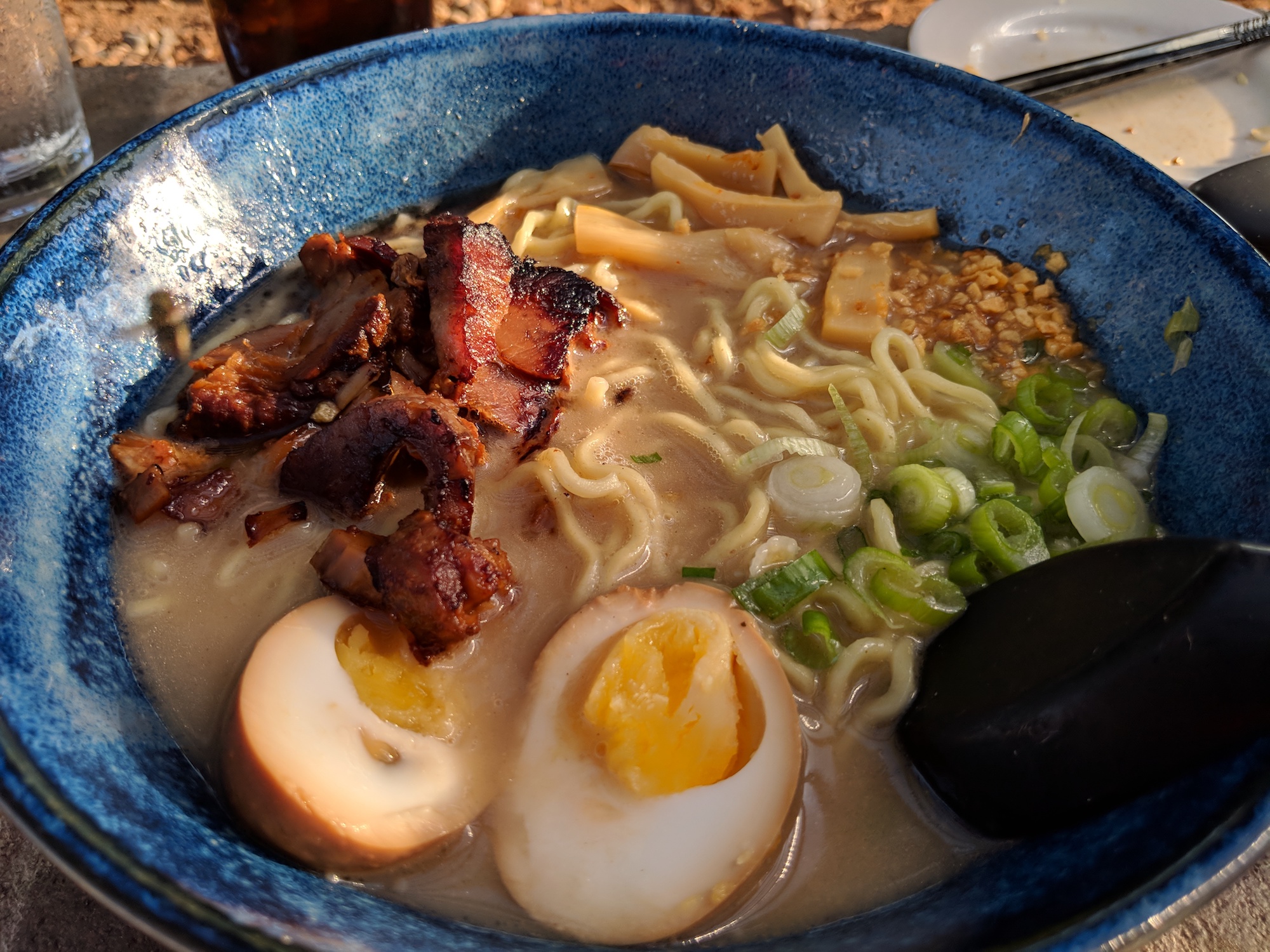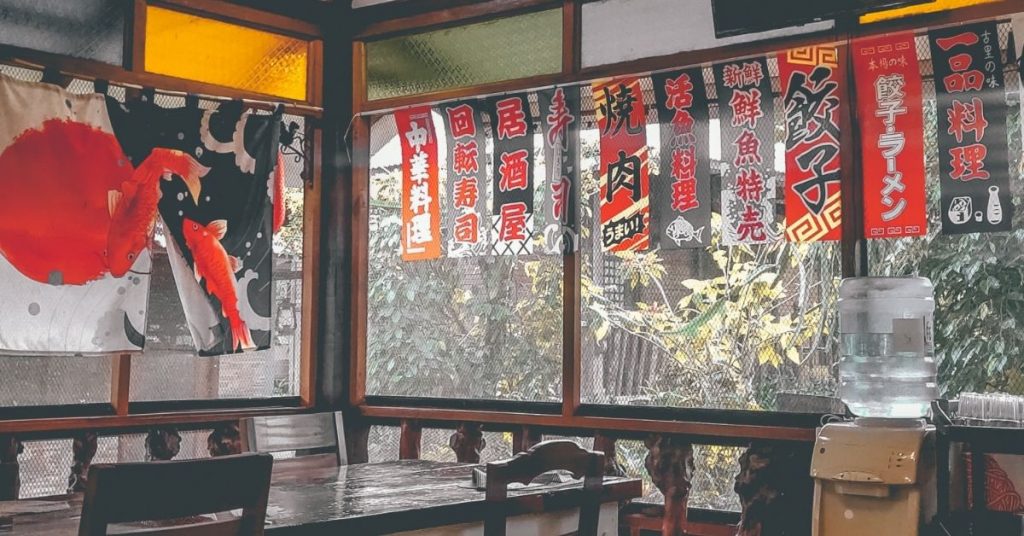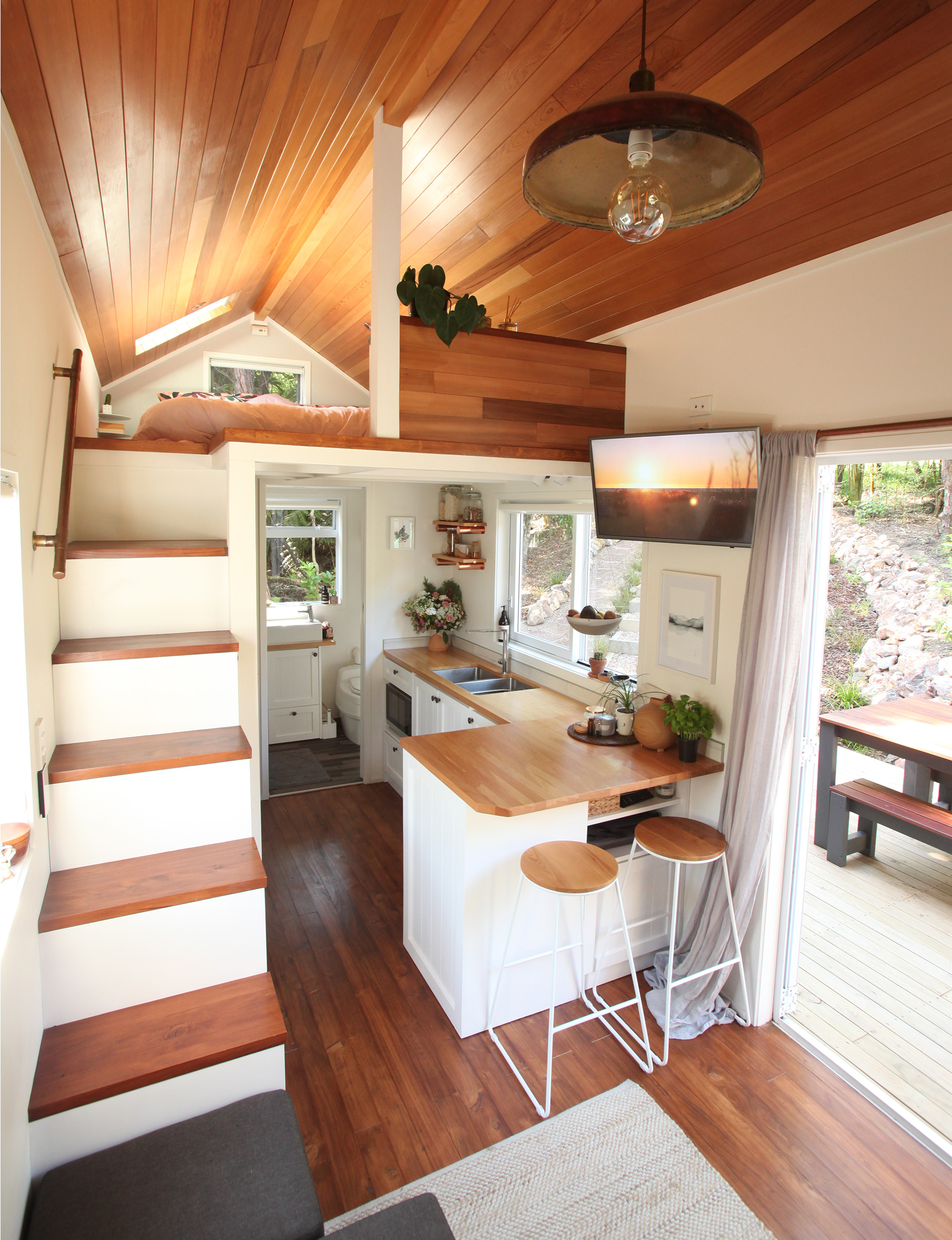Table Of Content
- 15 Essential Ramen Shops in Los Angeles
- Where To Eat This Weekend: Bulgogi Pupusas, Hemp Seed Guacamole, ‘Sticky Rice Sticks,’ and Korean Street Food In Venice
- Latest Food
- He protested in a clown suit outside a restaurateur’s home. The owner pulled a gun on him
- Hakata-Style ~ Shin-Sen-Gumi ~ Little Tokyo
- Momota Ramen House
- Nearby Restaurants
- Daikokuya Little Tokyo

“I understand their passion and I understand their sadness and I understand their anger,” Engelhart told The Times. “I had the same views of the world that they did before I shifted my ideas based on my experience in farming, and I have compassion for what they’re feeling. I hope that the vegan community and the regenerative community can really come together because I think they’re both powerful, powerful pathways for change. Slow-cooked Tonkotsu (pork) broth, finished with a perfect blend of 11 bold ingredients. Thin noodles served with Tatsu Egg, scallions and fried onions. This tantanmen specialist on Sawtelle comes from the prolific Tsujita group, which already has two standout noodle restaurants on the block.
15 Essential Ramen Shops in Los Angeles
One of LA’s most creative ramen shops comes from Top Chef winner Ilan Hall. To make the Grand Central Market stall’s signature vegan broth, Hall takes umami-rich ingredients like konbu and shiitake mushrooms and combines it with roasted sunflower seeds and white miso. The result is a rich broth that’s as good as a traditional porky one; a vegan “egg” tops every bowl. While Engelhart said the decision is partially a financial one, the larger factor is promoting regenerative farming and more ecologically sustainable practices.
Where To Eat This Weekend: Bulgogi Pupusas, Hemp Seed Guacamole, ‘Sticky Rice Sticks,’ and Korean Street Food In Venice
House-made ultra rich and creamy chicken broth slow-cooked with whole ingredients. Curly noodles topped with Tatsu Egg, flash fried onions, scallions and yuzu kosho paste. Gone are the days when you could score a hearty serving of ramen for under $10, but if you want a bowl that won’t break the bank, Shin-Sen-Gumi in Little Tokyo is famous for its Hakata-style ramen. They use a pork tonkotsu broth that takes three days to prepare and a signature straight, thin noodle. I prefer my ramen on the firmer side, so I appreciate that Shin-Sen-Gumi lets you select the desired firmness of your noodles. This ramen offering from the folks behind Torihei izakaya feels very much like a neighborhood ramenya in Japan, featuring an excellent tsukemen that's full of fish funk to go along with intense porkiness.
Restaurant Review: Stellar Ramen at Koyoté Restaurant Reviews - Salt Lake City Weekly
Restaurant Review: Stellar Ramen at Koyoté Restaurant Reviews.
Posted: Wed, 20 Mar 2024 07:00:00 GMT [source]
Latest Food
This focused ramen shop in Torrance serves polished bowls with a garlicky broth. Chashu pork melts in one’s mouth, while the noodles are of the thin, wheat variety common at Hakata-style shops. The chef-owner considers herself vegetarian while at home, opting to make her own yogurt, sour cream and kefir from her cows’ milk, but she is vegan when dining out as ingredient provenance and farming practices are less clear. Tokyo’s famous Afuri opened in LA after first expanding to Oregon. Sporting a yuzu-tinted seafood and chicken broth, this lighter style of ramen still packs plenty of flavor with soba-like noodles made on the premises and high-quality toppings. The cocktails and minimalist ambience makes the whole affair a pleasant experience.
Everyone orders the smoked dashi with whole clams or the tonkatsu broth. According to the World Resources Institute, beef requires 20 times more land and emits 20 times more greenhouse gas per gram of edible protein than beans and most other plant-based proteins. In celebration of our exhibition “The Art of the Ramen Bowl”, JAPAN HOUSE Los Angeles presented a delicious pop-up series that showcased the diverse flavors of Japanese ramen.

Hakata-Style ~ Shin-Sen-Gumi ~ Little Tokyo
Both the tonkotsu ramen and tsukemen are among the best versions available in LA. The broth and noodles are nearly perfect, with a strong seafood umami to round the soup out. This diminutive ramen shop is the best place for Japanese noodles on the Westside.
Momota Ramen House
Previously, she served as the restaurants and bars editor for Time Out Los Angeles, and prior to that, the award-winning food editor of Richmond magazine in Richmond, Va. To be the finest food city in the country and might be biased on that count but doesn’t believe she’s wrong. Originally from Tokyo, Tonchin LA takes over a prime Melrose Avenue location with sleek vibes, a cocktail bar, and upscale ramen bowls.
Nearby Restaurants
Tsujita’s thick and delightfully chewy noodles are served chilled with warm, gravy-like broth and a lime to squeeze over the top. I could pretend that I haven’t been craving Tsujita’s tsukemen since the moment I first tasted it, but I would be lying. Known for being warm, comforting, and familiar, Westerners often oversimplify the complexity of ramen, assuming the modest noodle dish is just one thing. But even within the vast culinary landscape of Los Angeles, there are endless styles, techniques, and regional varieties of ramen available to the hungry Angeleno. From traditional Hakata-style tonkotsu to a shiitake miso-based vegan ramen, here are five different styles and regional ramen varieties to try in Los Angeles. For approximately 14 weeks, seven different ramen concepts represented a variety of regional ramen types (including Tokyo, Kumamoto, Fukushima, and Yokohama), as well as other ramen styles popular throughout the nation.
Hokkaido Ramen House tests Iowa with state’s first opening in Coralville - The Gazette
Hokkaido Ramen House tests Iowa with state’s first opening in Coralville.
Posted: Thu, 15 Feb 2024 08:00:00 GMT [source]
This tsukemen specialist took over sister restaurant Aizen Udon, which moved to the Little Tokyo Marketplace a few blocks over. Tsukemen Aizen’s deluxe offering serves thinly shaved pork in a flower-like formation, along with a mound of thick noodles, spinach, lotus root, and boiled eggs. The star — a side bowl of fishy, umami-riddled dipping broth — coats every dipped noodle with an explosion of salty, fatty flavor. This Orange County ramen shop recently expanded to Gardena, with a stall inside the Tokyo Central Market serving tsukemen and ramen. While the disposable bowls are an unfortunate aspect of this casual outlet, the specialty of miso-based broth — either tamer white miso or more aggressive red miso — brings a rounded sweetness and deep umami flavor. Her brother, Ryland Engelhart, co-founded regenerative-farming nonprofit Kiss the Ground; Mollie Engelhart serves as director of its board.
House-made, slow-cooked Tonkotsu (pork) broth, finished with smooth Hakata Tonkotsu dashi. Thin noodles topped with kikurage mushrooms, scallions and sesame. Los Angeles has a long history of great ramen, but only in the past few years has the scene hit its stride. From rich tonkotsu (pork) to shoyu (soy sauce) and shio (salt), here now are the 15 essential ramen shops in Los Angeles. Stephanie Breijo is a reporter for the Food section and the author of its weekly news column.
Instead, he leveraged the 100-year-old building's unique ambiance to offer a nostalgic ramen experience. Despite the initial American perception of ramen as a cheap cup noodle, Takaaki's relentless work - including a year of barely sleeping, living in the restaurant, serving customers until 4am - slowly changed this view. Aided by positive social media reviews, the restaurant's fame skyrocketed. Yet, for Takaaki, the journey isn't over as he continues to refine Daikokuya's taste.
Starting May 29, the changes will roll out at that restaurant as well as in Culver City and her Pasadena brewpub. Plus an Roman chef veteran in a Hollywood apartment, chocolate Cuba Libres, Uzbeki plov with lazer rice, and cochinita melts in a Silver Lake yard. Here are the best things to eat around Los Angeles (and San Juan Capistrano!) this weekend. Maybe it doesn’t matter, especially at West LA’s Mogumogu which specializes in well-sauced, fully-loaded mazemen with toppings like chashu and poached eggs.
In 2018 she and her husband bought a family farm and started fighting food waste, transporting the compostable byproduct from her restaurants to their farm and placing it back into the soil. After selling their family farm in California, they moved to Texas and built Sovereignty Ranch, which also hosts workshops for practices such as homesteading and dome building. Restaurants have opted to include meat and dairy on menus in recent years, including Hot Tongue and Burgerlords, citing financial viability. If you want a classic, hearty bowl of ramen and don’t mind waiting, Daikokuya is a staple in Little Tokyo. Daikokuya’s tonkotsu ramen is probably what you’d imagine if you were asked to think of a bowl of ramen. The slightly curly egg noodles paired with a thick tonkatsu soup base and tender chashu are the epitome of comfort food.
What’s different about Killer Noodle is its homage to the spicy, Chinese-inflected tantanmen. With sesame- and pepper-laden noodles, the ramen is served as a noodle soup or “dry” on a platter. According to Engelhart — who operates Sage with her husband, chef-owner Elias Sosa — in years past the restaurants would do $7 million in annual business.
For an even richer broth with added back fat, I took Daikokuya’s recommendation to get the kotteri. It’s not a delicate, Instagrammable bowl by any means, but that’s how you know it’s good. Established in 2018, Iki Ramen has quickly become a Koreatown institution.
The collaboration between chefs Hiroyuki Masato, Andy Juliady, Sebastian Karyadi, and Jeffry Undiarto (the former manager of two-Michelin-starred n/naka) offers modern updates on familiar classics. If you’re craving something on the lighter side, Iki’s yuzu shio is bright and refreshing. Their soup base is flavored with house-made dashi and chicken broth. It has pork belly, menma (lacto-fermented bamboo shoots), nori, green onions, and a soft-boiled seasoned egg. Daikokuya Main Branch, born in LA's Little Tokyo in 2002, quickly became the city's top ramen hotspot. Under Takaaki's skillful management, the eatery overcame early financial struggles without resorting to renovations.

No comments:
Post a Comment